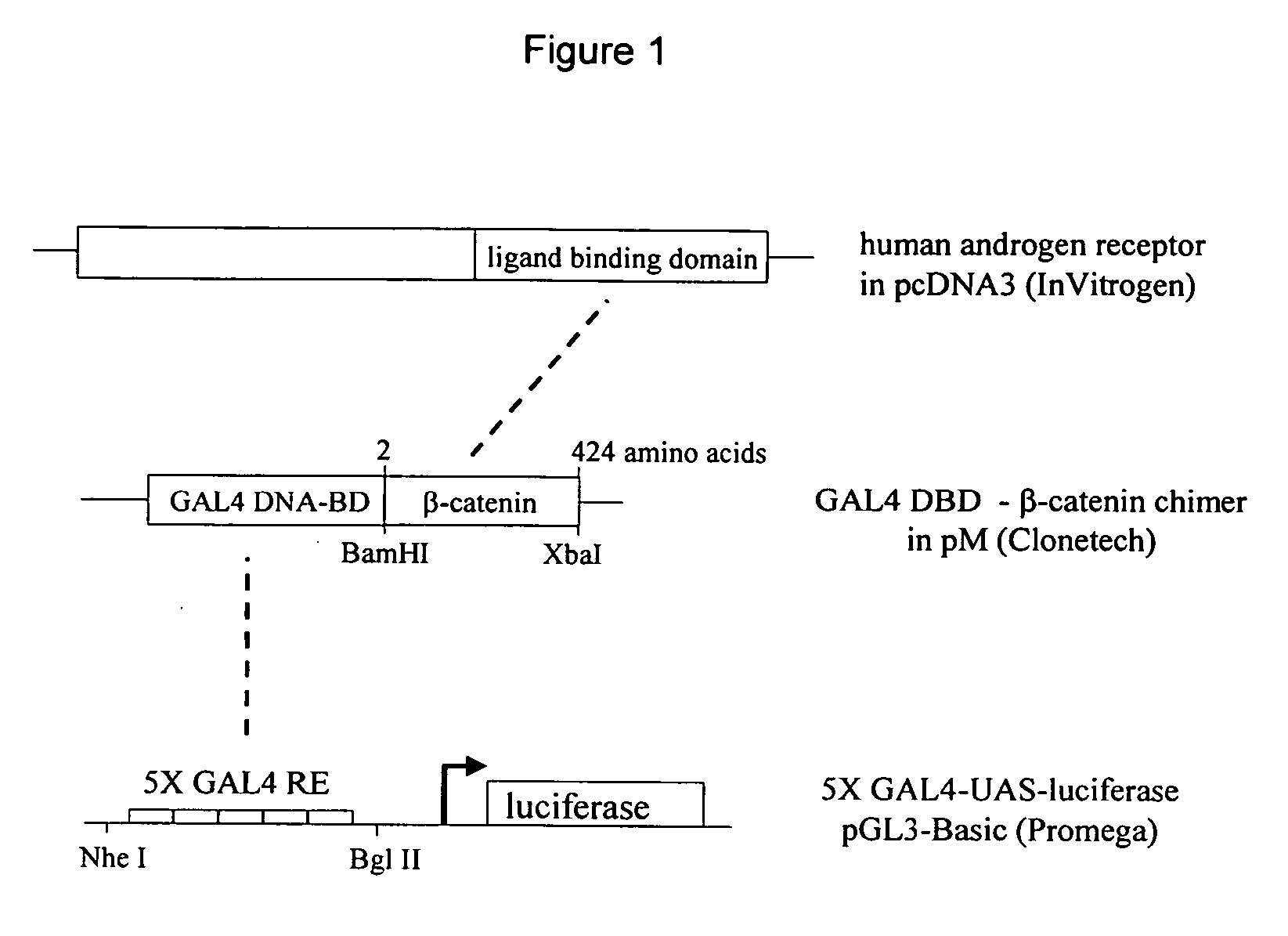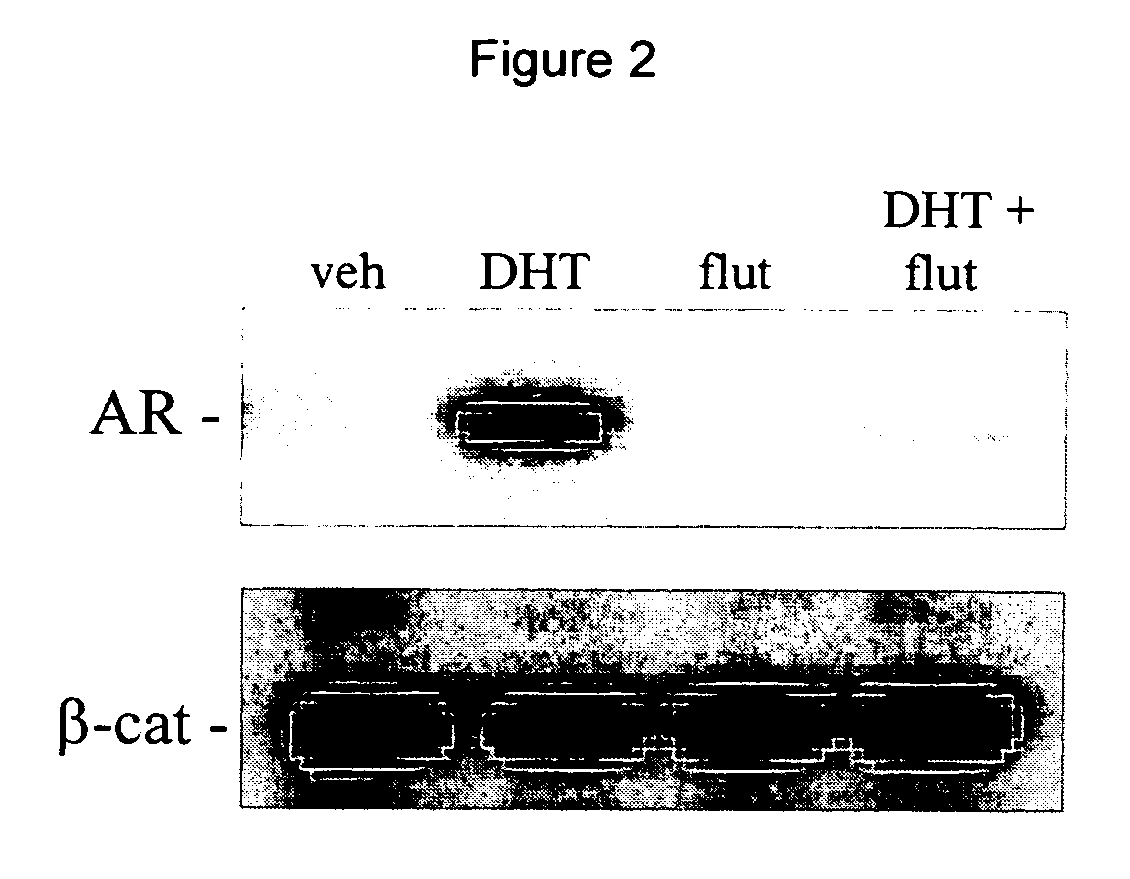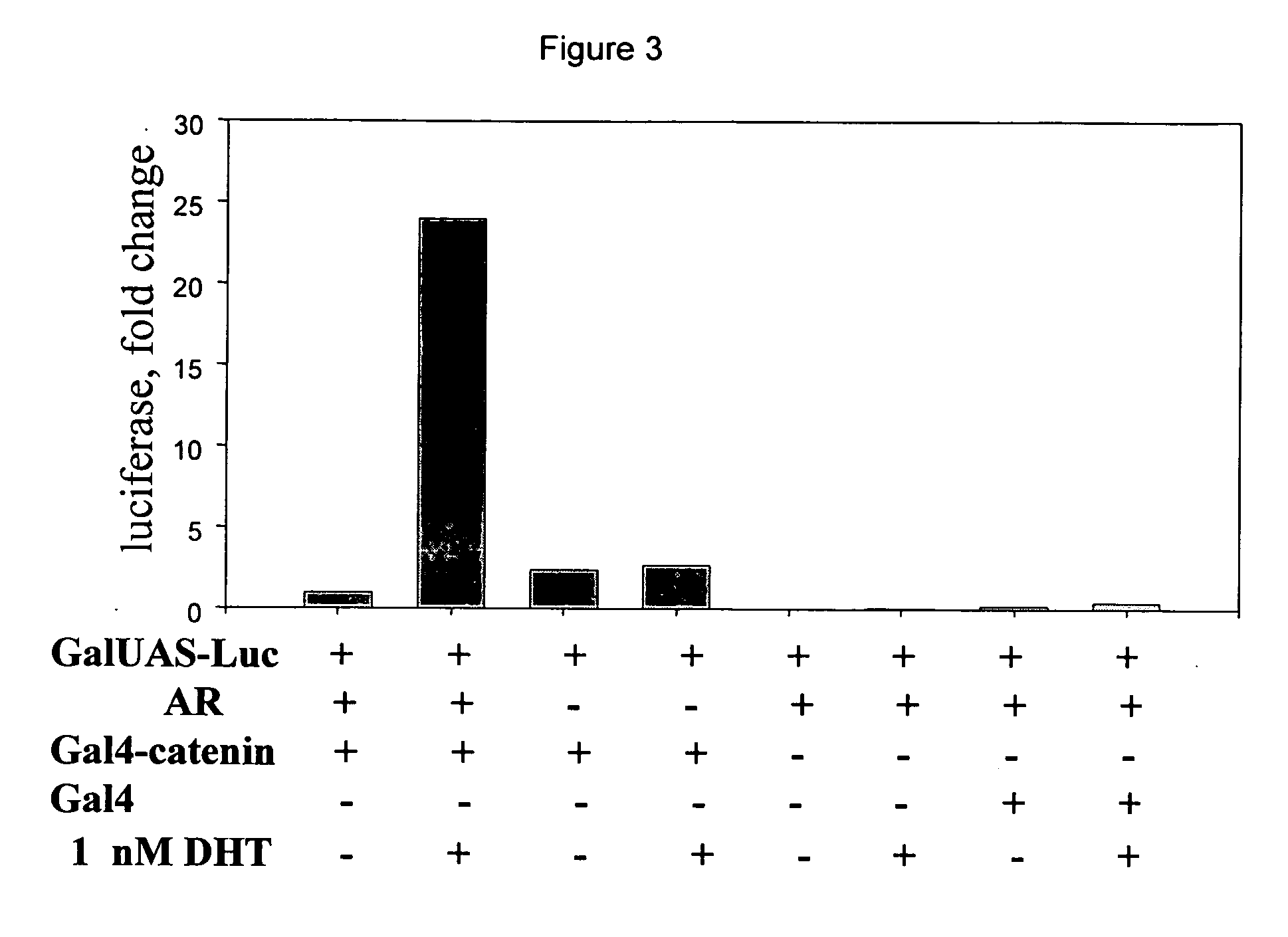Method of identifying compounds that modulate interaction of androgen receptor with beta-catenin
a technology which is applied in the field of identifying compounds that modulate the interaction of androgen receptor and beta-catenin, can solve the problems of difficulty in hybridization between any two nucleic acid molecules, and the natural conformation of the target protein may be altered in the fusion constru
- Summary
- Abstract
- Description
- Claims
- Application Information
AI Technical Summary
Benefits of technology
Problems solved by technology
Method used
Image
Examples
example 1
[0075] This Example illustrates a preferred embodiment wherein cultured cells were transformed with a GAL4 DNA response element-luciferase reporter plasmid, a plasmid expressing the coding region of the GAL4 DBD fused to the cDNA coding region for amino acids 2-424 of human .beta.-catenin (GAL4-.beta.-catenin) and a plasmid expressing full length wild type human AR (FIG. 1). The .beta.-catenin cDNA fragment was made by PCR amplification of the DNA coding sequence for amino acids 2-424 from human .beta.-catenin using a pcDNA3.1 .beta.-catenin expression vector (Invitrogen) as a template and single stranded DNA primers containing Bam HI and Xba I restriction sites respectively. The amplified DNA fragment was inserted into the multiple cloning site of the pM plasmid which was linearized using the restriction enzymes Bam HI and Xba I (Promega) and which contains the coding sequence for the GAL4 DBD upstream of the multiple cloning site. The reporter plasmid was made by sub-cloning five ...
example 2
[0078] L929 cells were used to determine if DHT stimulates the interaction between AR and .beta.-catenin in a cell line that endogenously expresses both proteins. L929 cells, which express endogenous AR and .beta.-catenin, were treated with 10 nM DHT, 300 nM hydroxyflutamide (flut), DHT plus flut, or vehicle (veh) for 17 hours. Cell lysates were harvested, precleared with protein A / G sepharose, and .beta.-catenin was immunoprecipitated using a goat polyclonal IgG against .beta.-catenin conjugated to agarose (Santa Cruz Biotechnology). The immunoprecipitates were analyzed by polyacrylamide gel electrophoresis followed by Western analysis for AR and .beta.-catenin (.beta.-cat) as indicated using antibodies from Santa Cruz (FIG. 2). The androgen agonist DHT at 10 nM was found to stimulate the interaction between AR and .beta.-catenin. There was no detectable interaction between these proteins in the absence of DHT. When cells were treated with DHT in the presence of a 30-fold excess of...
example 3
[0079] Experiments were performed to determine the requirement of each expression vector for luciferase activity in CV-1 cells.
[0080] The assay of the invention is demonstrated to measure the DHT dependent interaction between AR and .beta.-catenin. The reporter plasmid (GAL4-luciferase) containing the luciferase gene under transcriptional control of the 5XGAL4-UAS DNA response element was transfected into CV-1 cells in the presence or absence of the androgen receptor expression vector (AR), the GAL4-DBD-.beta.-catenin fusion protein expression vector (GAL4-.beta.-catenin) as indicated. Cells were treated with 1 nM DHT (+) or vehicle (-) for 18 hours where indicated. Cell lysates were harvested and analyzed for luciferase activity. DHT (1 nM) caused a large activation of reporter activity when both the AR and GAL4-.beta.-catenin expression vectors were transfected into the cells with the 5XGAL4-luciferase reporter (FIG. 3). AR and DHT had no effect on reporter activity in the absence...
PUM
| Property | Measurement | Unit |
|---|---|---|
| insulin resistance | aaaaa | aaaaa |
| concentration | aaaaa | aaaaa |
| length | aaaaa | aaaaa |
Abstract
Description
Claims
Application Information
 Login to View More
Login to View More - R&D
- Intellectual Property
- Life Sciences
- Materials
- Tech Scout
- Unparalleled Data Quality
- Higher Quality Content
- 60% Fewer Hallucinations
Browse by: Latest US Patents, China's latest patents, Technical Efficacy Thesaurus, Application Domain, Technology Topic, Popular Technical Reports.
© 2025 PatSnap. All rights reserved.Legal|Privacy policy|Modern Slavery Act Transparency Statement|Sitemap|About US| Contact US: help@patsnap.com



